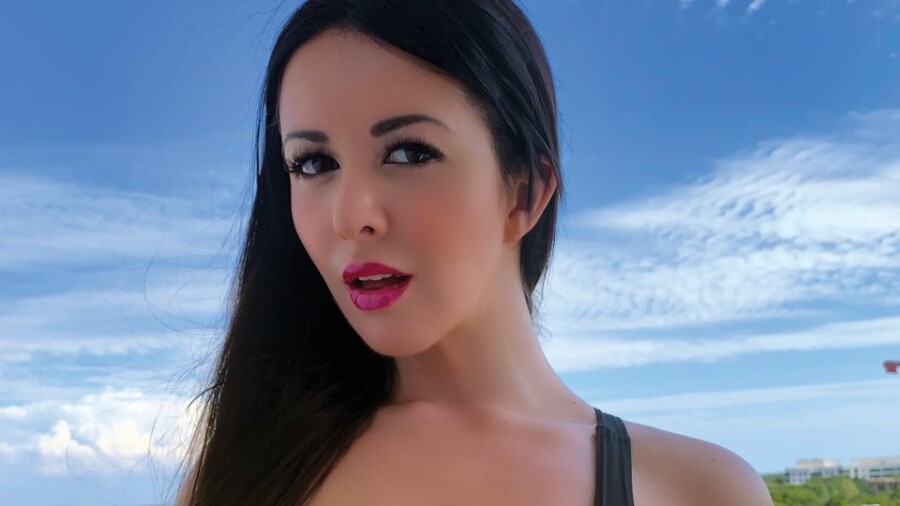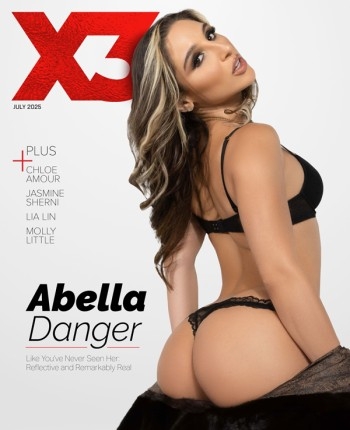If you’ve tried selling your own content online, then you know there’s more to being successful in the world of clips than just shooting and uploading content. While your favorite clip stores might do some advertising on your behalf, to maximize your income, you need to find your own customers as well and drive them to your sales page. After all, there are hundreds of thousands of clip producers out there and more joining our ranks every month. It’s easy to get lost in the noise.
How do you stand out in the digital crowd and drive vital traffic to your paid content? The answer lies in branding and advertising.
What is a Brand?
Your brand is a concept that exists in the minds of your customers that influences their buying behavior. It’s an identity composed of the total sum of impressions your customers have with you, your company and its products.
Brands are defined for customers through direct interactions and indirect interactions. Direct interactions include emails, DMs and conversations held at conventions or other live appearances. Indirect interactions include social media posts and bios, websites you’re on, interviews, tube sites and other places where a customer sees you, but where you aren’t communicating with them live. As a digital business, 95 to 100 percent of your interactions with customers will be indirect ones. Keep in mind that every interaction counts.
Short and sweet, your brand is more than your stage persona. It’s a collection of impressions a customer has about you, your products and the experience that customer has while interacting with you and your online presence.
Why Is Branding Important?
People are primarily creatures of impulse. We buy something because we think it will make us feel good. The urge to purchase happens really quickly — within two seconds or less — according to most studies. That’s not enough time for the human brain to think about the pros and cons of a particular purchase. Instead, the brain reaches out for something easier to process. It looks for features that are easy to recognize.
We buy what is familiar. We buy what is easy to find and understand.
Presented correctly, your brand makes you easy to recognize. Not only that, but your brand can convey enough information that customers will understand who you are and what you offer in that critical two-second window between impulse and action.
How to Create and Convey Your Ideal Brand
Step 1: Choose your brand identity
Your brand identity is a short message that conveys who you are, what you’re selling and what your products can do for the customer. In porn, a good starting point is what you look like and what genre(s) of content you create. You can then choose to add associations such as personality traits, any specialty acts you’re known for and other group associations such as hobbies.
Step 2: Recognize your brand identity and personal identity as separate entities
Indie content producers often create brand identities that closely mirror their personal identities. That is fine and absolutely encouraged. However, you should recognize that no matter how similar the two may be, they are two separate things and should not be identical.
Your brand identity is something you create with intention. You’re showing your products (which includes yourself) in the best possible light. You want to appeal to as many people as possible, so research your potential audience and figure out what traits you wish to highlight or create in your brand identity. You can even go so far as to completely fabricate aspects of your appearance, personality or preferences if you wish to create the perfect brand. How far you take it depends completely on your comfort level, your intended audience and what you want to achieve with your brand.
Step 3: Communicate your brand with clarity and intent
The ideal brand is relatively simple with a clear message. Remember, a brand exists to help you sell content. This doesn’t mean dumb yourself down. It means you need to know your brand message and stay on topic when you present yourself in professional spaces.
Professional spaces include both direct and indirect interactions, including social media.
The following guidelines apply to every single online platform you use, from social media to paid platforms where you sell content and services:
- Display a clean and concise bio. Put that rarefied description of who you are and what you do in your bio, and don’t distract from that message.
- Don’t change your profile image or header too frequently because that reduces visual recognition.
- Your display name should be consistent, at least in part.
- Always post or tweet toward your brand message. Not every post is an advertisement, but they should all be coming from the same attitude and character you’ve defined in your brand message.
Step 4: Don’t alienate your audience
In some ways, being an adult entertainer is like being a politician. You do not want to alienate your audience. You exercise diplomacy and give the “right” answer they want to hear without compromising your values. When you post online, choose your content, words and phrasing very carefully to make sure they are in line with your brand identity.
Top 5 things to eliminate from your porn brand expression:
- Industry and personal feuds — customers don’t care and it eats up attention.
- Politics — you lose part of your audience no matter what.
- Religion — you lose part of your audience, no matter what.
- Children — inappropriate discussion space. Exception: pregnancy fetish.
- Begging for money — desperation alienates customers. There’s a difference between a call to action to buy/pay for something, and begging.
Top 5 things to limit in your porn brand expression (be mindful in your choices and how they are presented):
- Social issues — often divisive. Choose your battles/identities carefully.
- Complaints and rants — especially about the industry. Negativity eats into your profits. People watch you to escape their problems, not hear about yours. You can talk about these things without dragging down your feed.
- Health and mental health problems — don’t let them eat up attention.
- Negativity toward customers — lecturing and name/shame is counterproductive, generally. Lead them by praising good behavior.
- Promises of “coming soon” products, info, BTS and actual product preferences! Announcements of upcoming events are fine, but be sure to fulfill them.
Step 5: Treat your brand identity as a living document
Your brand can — and should — evolve over the course of your career. Consistency of your brand doesn’t mean it’s static. It means that when you do alter your message and your presentation, you do so with intent.
Some changes are the result of external, visible forces such as aging from “teen” to “MILF,” undergoing obvious plastic surgery, or drastically changing the type of content you produce. Other changes are intentional alterations designed to help you connect better with your current audience or reach a new audience altogether.
Revisit your brand every few weeks or months and ask yourself if your current identity and expression makes sense. Does your brand align with your current goals? Check your social media health. Are you reaching the customers you want to reach? Are they engaging with your content and moving to paid platforms? Check your sales numbers and paid site traffic. How is your overall performance?
Tweak your brand and make it work for you. Even small changes can have big results. Make sure you’re getting the results you want and deserve.
I hope you found my tips helpful. Now get out there and make your brand the best it can be! And don’t forget, producers and other industry folk can always hit me up on Twitter @larkinlovexxx for one-on-one coaching and advice. Best of luck!
Larkin Love is an XBIZ Award-winning content creator, who is among the highest-ranked Modelhub/Pornhub producers. She was recently featured as the Clip Star of the Month for the June issue of Clip World. Follow her on Twitter @LarkinLoveXXX and Modelhub.com/Larkin-Love and to keep up with her latest projects.







